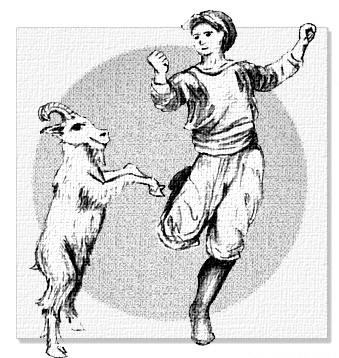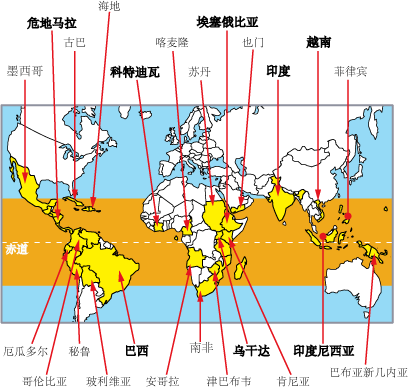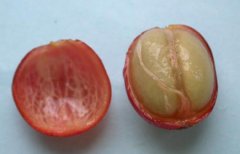The hometown of coffee is Ethiopia in Africa.
According to the study of the origin of coffee, it is agreed that the earliest place of origin of coffee should be Ethiopia in Africa (ancient Abyssinia), which has produced magical fruits that have affected the world to this day.

The legend of the origin of coffee is generally accepted as the legend of Ethiopian shepherds. The story begins with a goat: a young shepherd named Kaldi found that his goat had eaten a kind of red fruit and danced excitedly without sleeping, so he caught it and tasted it. He told the monks he knew about it, and the legend of coffee began.
Coffee began a long journey around the world: for more than a century, it spread from East Africa through Yemen to the Arabian Peninsula, then to the Middle East through Turkey, across the Eurasian land bridge and to Europe. It spread to America and Asia through the Europeans. No matter in the Muslim, Christian or Buddhist world, human beings all enjoy the gift of nature!

At present, the main producing areas of coffee are concentrated in the narrow strip with the equator as the center line and latitudes within 25 degrees from north to south, like a belt around the earth, commonly known as the coffee belt (Coffee Belt). Coffee belt is located in the tropics, because coffee trees are not cold-resistant, the average annual temperature is about 22 ℃, neither hot nor cold is the most suitable. The average annual rainfall is 1500-2000 mm, and the average rainfall, especially during flowering and growth, is sufficient, while less rainfall during harvest is the best.
There are more than 60 countries in the coffee belt. In the past, countries in Central and South America have accounted for more than half of the total global output. In recent years, the output of Southeast Asia has greatly increased, which has attracted people's attention. According to National Coffee Association data from 1997 to 1998, the top ten countries in coffee production are Brazil, Colombia, Indonesia, Vietnam, Mexico, Ethiopia, India, Guatemala, C ô te d'Ivoire and Uganda.
Important Notice :
前街咖啡 FrontStreet Coffee has moved to new addredd:
FrontStreet Coffee Address: 315,Donghua East Road,GuangZhou
Tel:020 38364473
- Prev

Coffee and Pope Coffee is grown in large quantities in the Arabian Peninsula
From the 15th century coffee was grown in great quantities in Arabia, and the whole Muslim world enjoyed this so-called gift of God. More and more Europeans exploring Arabia in the Middle East are curious and documenting the coffee story. Slowly Venetian merchants began to think about coffee re-export business. However, the Arabs were wary at first. After all, this was their divine fruit.
- Next

Arab magic "black water" black coffee
In the eighth century AD, a magical black water known as Qahwa was circulating in Arabia, which was said to restore strength, energy and no drowsiness. Avicina Ibn Sina (980-1037), a 10th-century Muslim philosopher and famous Iranian doctor, recorded a plant from Yemen called Bunchum, which is said to be something similar to coffee. as early as
Related
- Beginners will see the "Coffee pull flower" guide!
- What is the difference between ice blog purified milk and ordinary milk coffee?
- Why is the Philippines the largest producer of crops in Liberia?
- For coffee extraction, should the fine powder be retained?
- How does extracted espresso fill pressed powder? How much strength does it take to press the powder?
- How to make jasmine cold extract coffee? Is the jasmine + latte good?
- Will this little toy really make the coffee taste better? How does Lily Drip affect coffee extraction?
- Will the action of slapping the filter cup also affect coffee extraction?
- What's the difference between powder-to-water ratio and powder-to-liquid ratio?
- What is the Ethiopian local species? What does it have to do with Heirloom native species?

